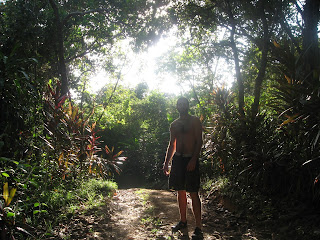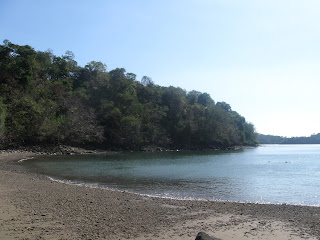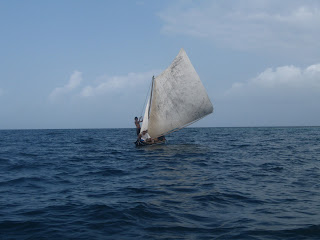We woke early in the Kuna Yala. We took a boat to a jeep. The jeep took hairy, switch-back turns through jungly mountains before arriving in Panama City five hours later. We headed to the Casco Viejo neighborhood of Panama City to grab lunch. From there we headed to the bus depot to hitch a ride for David, 8 hours west. We sat next to a cute young boy who happily chatted most of the ride. We arrived in David around 8 or 9 pm with another hour to travel before reaching Boquete. Somehow, we navigated the crowded bus station to find our own Diablo Rojo, or converted school bus, to travel up the mountain to Boquete. It was a Friday night & the bus was packed with young couples. We felt conspicuous and cumbersome, loaded down with luggage. Tropical breezes floated through open windows, bachata played loudly, & I saw Phillies paraphernalia on the driver's dash-- we were in Chooch's territory.
We made it to a desolate town square late at night. We tried to make sense of our map to find the hostal we had reserved. Eventually locating it, the gate was locked. A night watchman was asleep on the couch. Finally, we roused him (& several neighbors) & were shown our room. I was so exhausted.
In the morning I woke up to find this:
Boquete is a charming mountain town. I highly reccomend finding time to visit! Though perhaps not arriving the same day you depart from the San Blas...
Kevin & I were immediately enchanted. There are several coffee fincas in the surrounding mountains. You can find these coffee plantations around the world. Thus far, my favorite is a worker-run & environmentally-sustainable coffee collective in Nicaragua, though it's become my favorite via a friend's story. I've only visited Cafe Sitton in Boquete. Not a cooperative, but an intriguing story of my favorite beverage.
So much verdant coffee!
Coffee drying in the sun. From there we headed to the warehouse.
Play time! Fear not-- we were assured the roasting process would remove gringo foot.
One more for the road. We also made time to head to the local hot springs. The coolest part of heading down to these naturally occurring springs was passing the sweetest farm en route!
Cold refreshing river & hot springs. The best!
Kevin went ziplining.
I wanted to hike Sendero de los Quetzales. This trail is epic. From Boquete we took a Diablo Rojo down into David & then back up the other side of the mountains to Cerro Ancon.
Trail conditions are notoriously variable so we hired a guide.
The trail was super scary at moments.
& then magic.
Those moments felt other-worldly.
Then you go into the super-market & play with machetes.
& get treats on your way out of town
Cheers!




























































